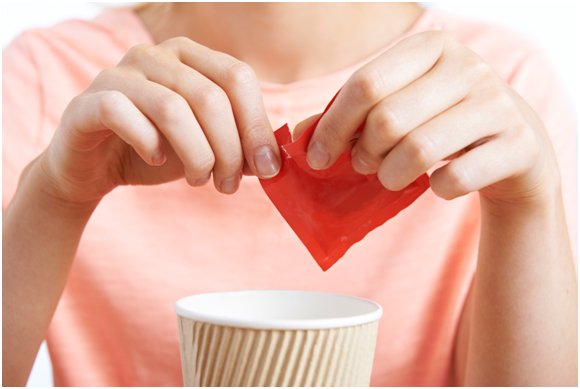It’s July, and the 4th is nearly here. We like to drink iced tea in the heat of the summer, and in my cupboard are tea bags blended especially for making iced tea, made by Luziana. They are extra large and when brewed, make a noticeably smoother cup of tea than my old Lipton tea bags.
I prefer my ice tea plain, but many Americans prefer it sweet. Like, really sweet. They even call it “sweet tea.” It’s definitely part of an ongoing trend toward sweetening up our foods and drinks.
In addition to sweet treats to celebrate holidays, many of the foods we purchase contain added sweeteners. One study looked at sweeteners in foods purchased by Americans between the years of 2005 and 2009. The researchers tracked the purchase of “uniquely formulated foods”, meaning foods that did not include any raw foods or food with only one ingredient, such as apples or eggs. It found that 75% of those “uniquely formulated foods” had some type of sweetener added to them. Yikes!
That study divided sweeteners into two types: caloric sweeteners (CS) and non-caloric sweeteners (NCS). The five most common caloric sweeteners found in “uniquely formulated foods” were corn syrup, sorghum, cane sugar, high fructose corn syrup, and fruit juice concentrate. They found 53% of baby food formulas, 75% of salad dressings and dips and 78% of vegetable juices contained at least one added caloric sweetener.
Although NCS sweeteners were found in only 1% of foods and beverages, over the course of the study Americans chose more NCS-containing foods and beverages every year, and that trend has continued into today.
Non-caloric sweeteners have been used for decades as food additives and are considered safe. But even though they are lower in calories than caloric sweeteners, they have not been shown to encourage weight loss or improve blood sugar control in people with diabetes.
Research published in the October 2014 issue of Nature magazine may explain that observation. Samples of 4 different sweeteners were given to mice: sugar and three commonly used non-calorie sweeteners: aspartame, saccharine and sucralose. The mice given the non-caloric sweeteners showed changes in the makeup of their intestinal bacteria, while sugar had no effect.
The mice whose intestinal bacteria changed handled food differently. Those mice showed higher blood sugars after eating and their blood sugars took much longer to drop back to normal levels, consistent with a pattern called glucose intolerance, which is associated with an increased risk of becoming diabetic.
When researchers introduced samples of the changed mice’s gut bacteria into normal mice, the new mice’s gut bacteria changed too. And when it did, so did the same pattern of glucose intolerance occurred.
Trying the same experiment on a small group of humans, only a few of them showed changes in their gut bacteria, but in those who did the same pattern of glucose intolerance was seen as in the affected mice. Although the effect of the sweeteners on gut bacteria doesn’t happen consistently in humans, it could explain why switching from using sugar to an artificial sweetener has not had consistently helpful effects in weight reduction or controlling blood sugars in diabetics.
According to Jason Fung, MD, author of The Obesity Code and The Diabetes Code, the real obstacle to weight loss isn’t too many calories, it’s insulin resistance from too much insulin. You can have insulin resistance even if you eat “sugar-free” candies and other foods. While caloric sweeteners like sucrose, fructose, agave and honey raise your blood sugar and trigger a burst of insulin from your pancreas, what’s surprising is that non-caloric or very low caloric sweeteners don’t have an effect on your blood sugar but still trigger insulin release. In fact, some of them cause your pancreas to release even higher amounts of insulin than caloric sweeteners like sugar or honey.
Stevia is a newer calorie-free sweetener from a plant native to South America in the crysthanthemum family, related to ragweed. Stevia was approved for use as a food additive in 2008 and is marketed as the sweetener Truvia®.
Individual servings of non-caloric sweeteners now include pink packets of saccharine (Sweet’N Low®), yellow packets of sucralose (Splenda®), blue packets of aspartame (NutraSweet®, Equal®), and green packets of stevia (Truvia®).
Then there’s xylitol, the dentist’s friend but a dog owner’s nightmare. Xylitol is a low-calorie sweetener extracted from natural sources like corn and popular in sugarless gum and mints because of its protective effect on tooth enamel. It’s even available as a sugar substitute for baking.
But xylitol is absolutely DEADLY to dogs, causing very low blood sugar, liver damage and liver failure. Xylitol triggers a dog’s pancreas to dump out insulin, dropping their blood sugar so low they have seizures. Since even a small amount of xylitol can be fatal, avoid using xylitol around dogs.


